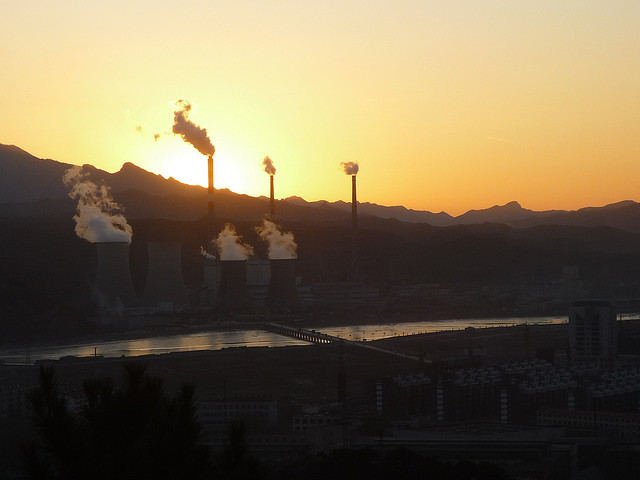
While some analysts believe China is “under pressure” in the manufacturing sector, there’s no doubt the nation continues to dominate the rest of the globe in emitting heat-trapping carbon into the atmosphere.
And China isn’t about to give up that No. 1 spot anytime soon — in fact, the country is doubling-down on its carbon-emitting efforts.
China is prepping to build more than 60 coal-to-gas plants in remote, mostly rural areas. The goal is to burn coal to create natural gas and electricity that will power big eastern cities such as Beijing, which continue to struggle with severe air pollution.
But cleaning up the smog from the cities will create new problems, as the Associated Press (AP) reports:
If all of the plants start up, the carbon dioxide they’d release would equal three-quarters of all energy-related carbon emissions in the U.S., according to U.S. government data and energy experts from Duke and Stanford universities. That is far more than now produced in China by burning coal, the country’s main source of power.
Chi-Jen Yang, part of the team at Duke, told the AP that once China builds the plants, it will be stuck with using them as a primary power source — and the entire world will pay the cost. “This short-term mistake will become a mistake that will be hard to turn around for decades,” Yang said.
Although distressing, the damaging environmental impact of China’s energy plans is sadly not much of a surprise to the team here at the Alliance for American Manufacturing (AAM).
China is woefully ill-equipped to deal with environmental issues, considering its Ministry of Environmental Protection (MEP) had only 300 employees as of 2009 — compared with the 18,000 or so people who work for the Environmental Protection Agency (EPA) in the United States. Even if it had an adequate number of employees, the MEP doesn’t really have much muscle to do anything — China’s air and water pollution standards are notoriously weak and ineffective.
As a result, China emits more carbon into the atmosphere than any other nation and twice that of the United States, which is the second-biggest carbon emitter, according to the AP. Even if China doesn't build the new plants, its emissions are expected to double over the next 25 years; emissions in the U.S. are likely to stay steady.
And as AAM noted in a 2009 report, China’s unwillingness to address the environmental impacts of its actionsis creating major damage. Sixteen of the 20 most polluted cities on Earth are in China, and pollution causes as many as 750,000 premature deaths in China each year.
The impacts are felt here in the United States — on some days, one-fourth of the dust and soot in Los Angeles actually comes from China.
Meanwhile, the impact of China’s new plants already is being felt by the folks living in those rural areas. The first plant is now online in Inner Mongolia, which changed the way of life for one local farmer:
As a boy growing up there, farmer Adiya could ride his horse through waist-high grass for miles without meeting another person. Now, the 32-year-old says he stays indoors some mornings because of the industrial stench.
Since the plant started running in December, it has obscured the blue skies above Adiya’s home with smoke while black pools of wastewater have turned up in the grasslands.
Unfortunately, it looks like we’ll be reading about stories like Adiya’s for years to come.
